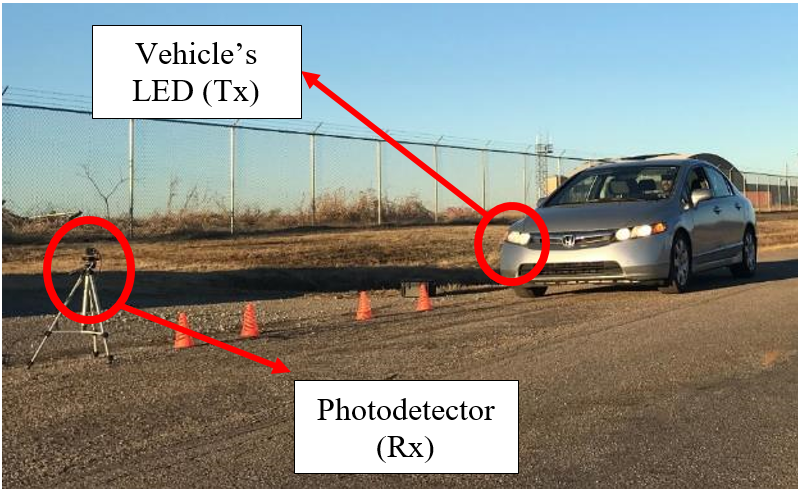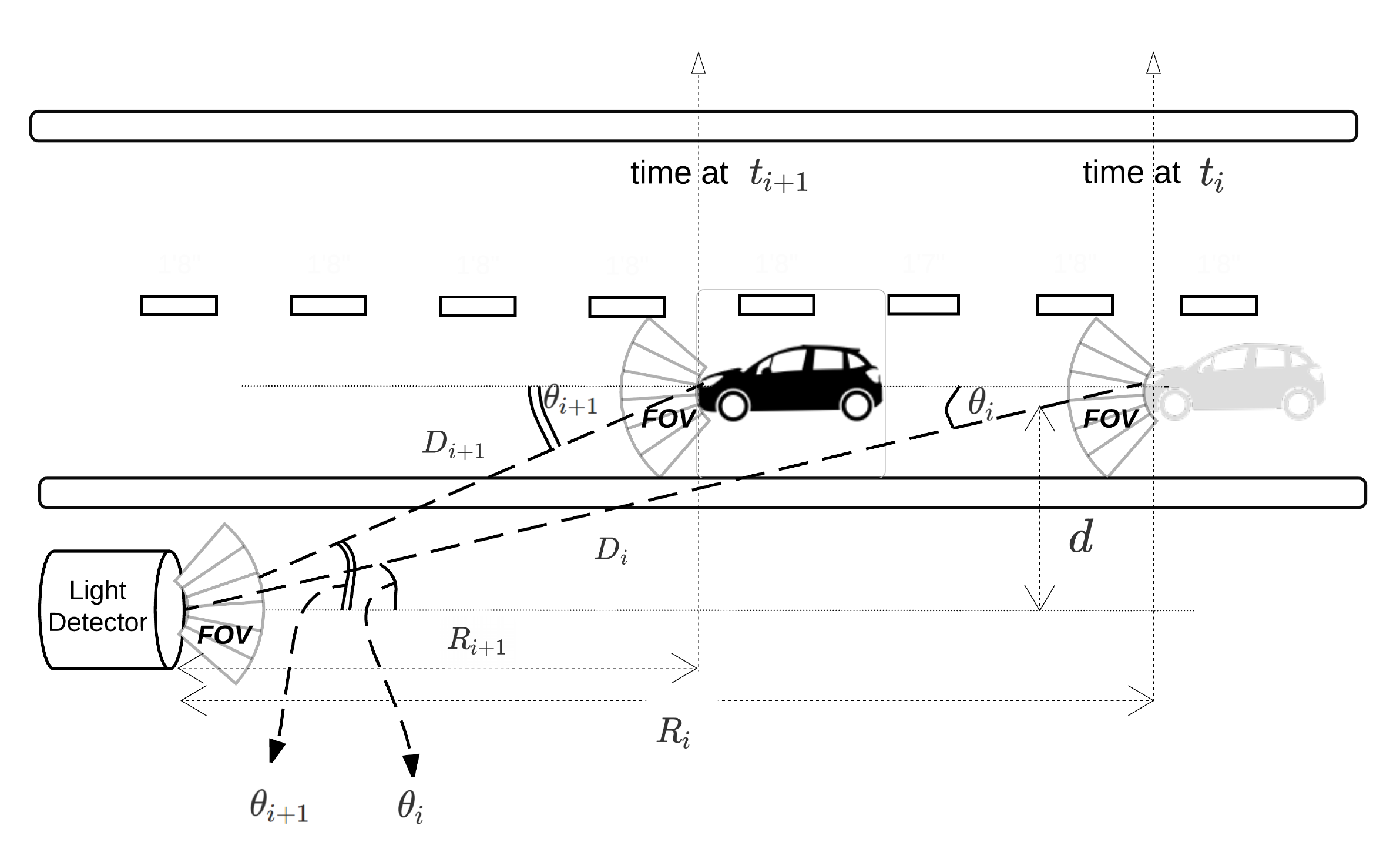- Vitals Monitoring
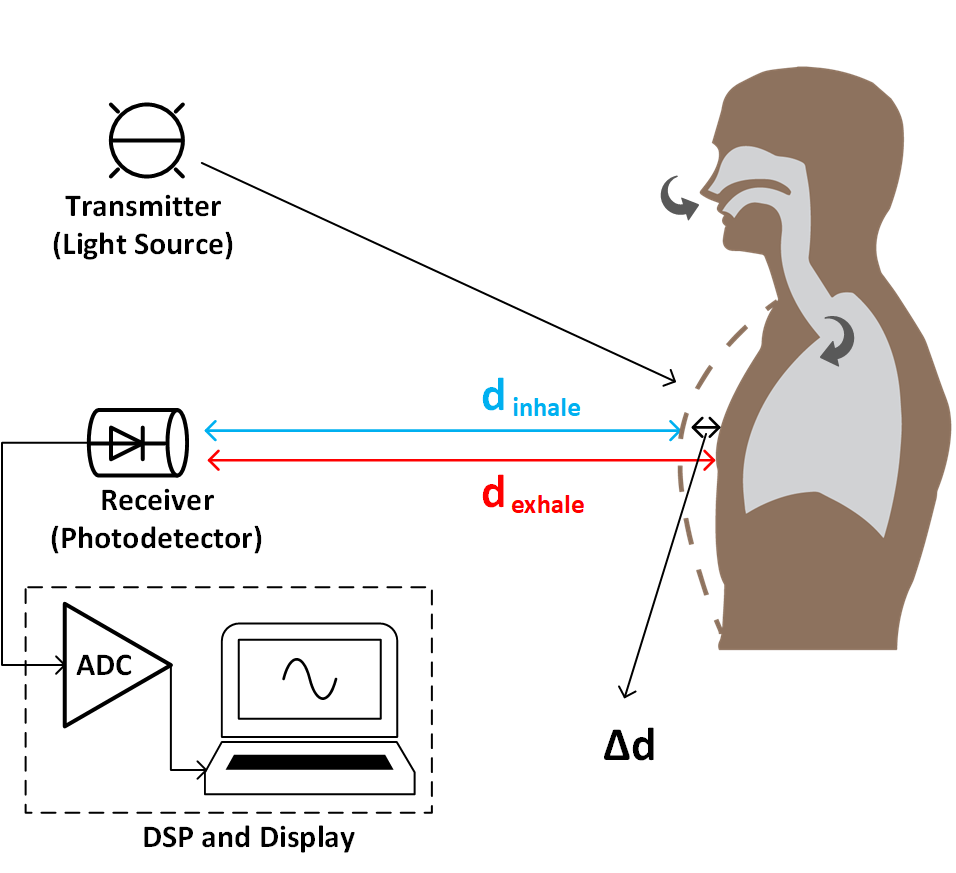
In this study, we present a new wireless (non-contact) method for monitoring human vital signs (breathing and heartbeat). We have demonstrated for the first time that vitals signs can be measured wirelessly through reflected visible light signals, also referred to as visible light sensing (VLS). There is a patent-pending1 for this idea.
[1] S. Ekin and H. Abuella, “System and method of non-contact vital sign monitoring through light sensing,” Patent, US Patent App. 62/639,524.
- Vehicle to Infra-Structure communication (V2I) setup
In this project, a vehicle communication prototype was designed and implemented to transmit (broadcast) vehicle ID by using vehicle headlamps which can be utilized in different vehicular communication applications, e.g., arterial travel time measurements. This work was supported by U.S. Dept of Transportation, Transportation Consortium of South-Central States (Tran-SET) under Grant No. 18ITSOKS01.
- Gesture Recognition using reflection
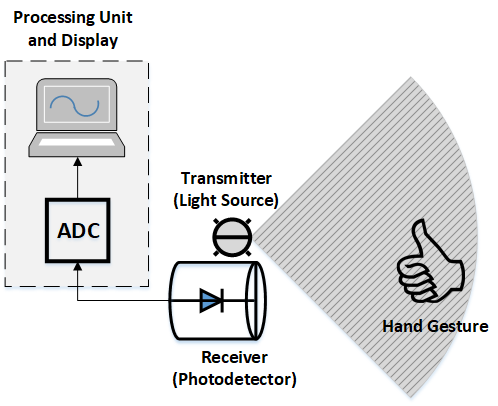
In this study, we demonstrated the ability to wirelessly recognize hand gestures using only reflected incoherent light signals from a human subject. This is fundamentally distinguished from RADAR, LiDAR and camera-based sensing systems. The developed light-based sensing modality is non-contact, using only a simple low-cost light source (e.g. LED) and a sensor (e.g. photodetector).
- Occupancy estimation
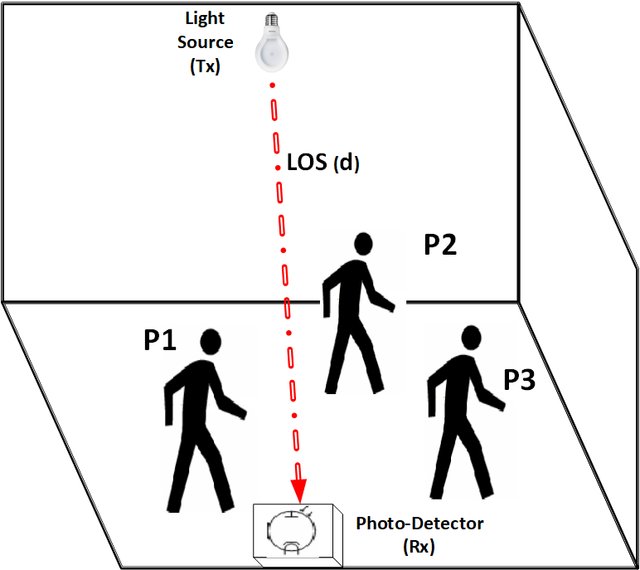
In this study, a new occupancy estimation technique based on visible light sensing (VLS) is presented. A visible light source (e.g., LED) is utilized as the transmitter and a photo-detector (PD) used as a receiver, forming a visible light sensing system. Depending on the number of people in the room crossing the line-of-sight LOS (between the light source and PD), the received power at the receiver change.
- Visible Light Detection and Ranging (ViLDAR)
In this study, we investigate our speed estimation sensing system named “Visible Light Detection and Ranging (ViLDAR)”. ViLDAR utilizes visible light sensing technology to measure the variation of the vehicle’s headlamp light intensity and estimate the vehicle speed. The measurement settings of the ViLDAR experiments are presented. The preliminary results obtained in the real-world environment/setting are promising when compared to the simulations. There is a patent-pending2 for this idea.
[2] H. Abuella, S. Ekin, and M. Uysal, ”System and Method for Speed Estimation, Detection and Ranging Using Visible Light in Vehicles” US Patent App. No. 62/541,913
- Bridge Vibration analysis
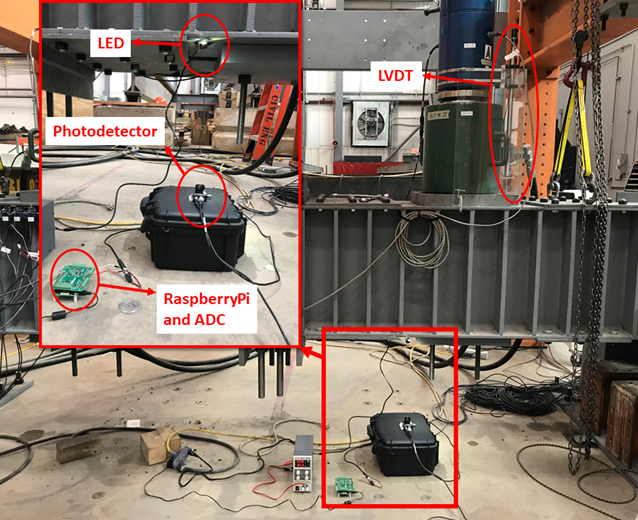
This study proposes an innovative and cost-effective technique that utilizes visible light sensing to measure displacements and vibrational characteristics of bridge components under static or dynamic loading. The results of an indoor experimental investigation are summarized and compared to the linear variable differential transformer (LVDT) results.

